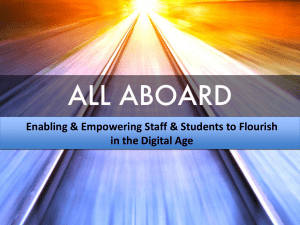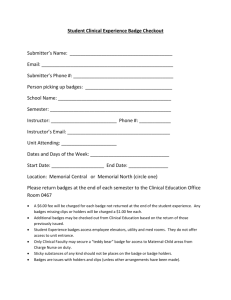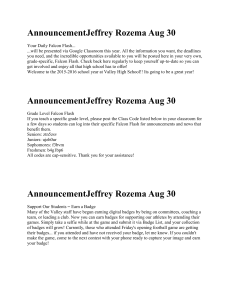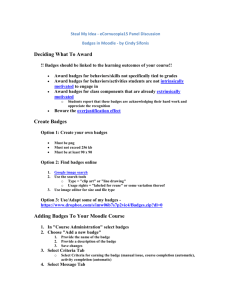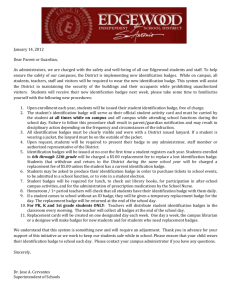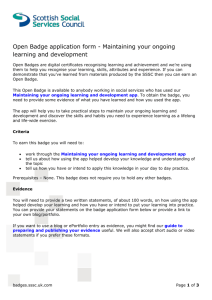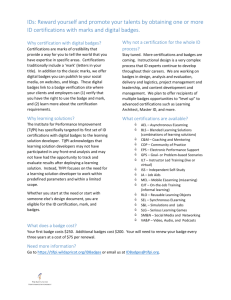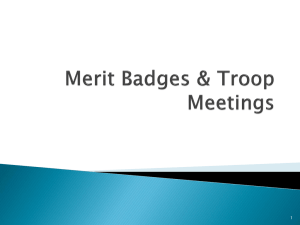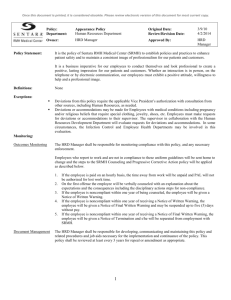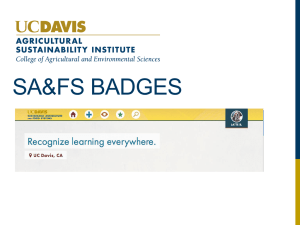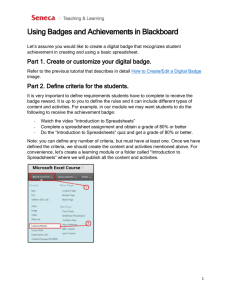247 Open Badges
advertisement
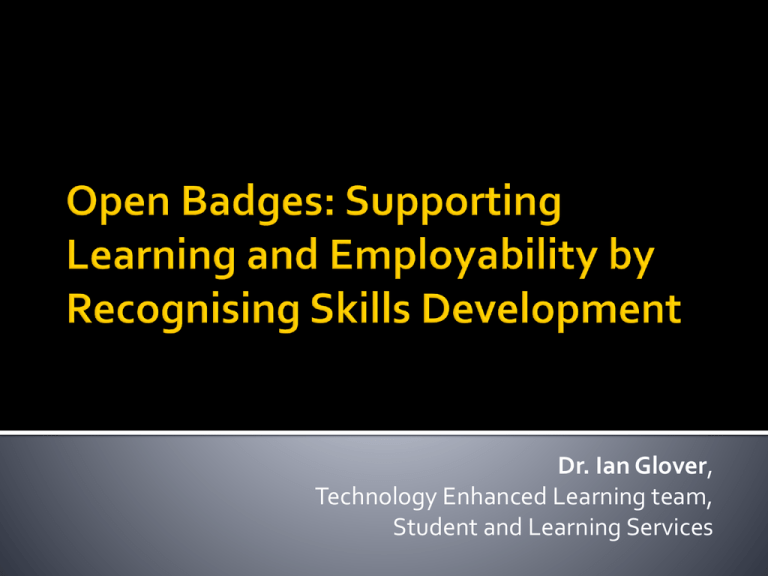
Dr. Ian Glover, Technology Enhanced Learning team, Student and Learning Services Visual representation of achievement, experience, affiliation and/or interest - ideally distinctive and understood within a community. Some examples: “Badges mean nothing in themselves, but they mark a certain achievement and they are a link between the rich and the poor. For when one girl sees a badge on a sister Scout’s arm, if that girl has won the same badge, it at once awakens an interest and sympathy between them.” - Juliette G. Low, Founder of Girl Scouts of the USA Link to criteria and evidence for award Add security and verification can check whether a person was actually awarded a specific badge Have the credibility of the awarding body Allow sharing of 'badge clusters' from different sources with others on Facebook, LinkedIn, etc. Essentially, an image + embedded information Open Badges Anatomy (Updated) by Kyle Bowen. CC-BY-SA. Growing recognition that significant amounts of learning happens outside the classroom Grade transcripts hide the truth about learning Strong links with current trends such as MOOCs, Gamification, Mobile Learning but can be used independently of these Surface the learning 'hidden' in a transcript Encourage students to undertake co- and extracurricular activities Helps recognise informal learning Enables students to differentiate themselves from classmates The rise of the Informal University? (MOOCs + Badges) * Awareness = Degree-equivalent? Swiss Army Badge by Kyle Bowen. CC-BY-SA Showing competency in a skill, e.g. nursing students taking blood samples Recognising extra-curricular activity e.g. a music student participating in an orchestra Representing co-curricular development e.g. participation in Students' Union activities, such as chairing society meetings Identifying common themes in a programme e.g. showing all modules that develop debating skills Getting businesses and professional bodies involved e.g. co-creating badges that meet workplace skills, or professional attributes Build toward specialism badges e.g. students get badges that relate to their learning journey, by reflecting their optional modules Are there skills that students use and develop? Do you have extra-curricular activities to encourage? Do you want to draw links between learning and skills demanded by employers/professional bodies? Indiana Jones and the lost badge by Kyle Bowen. For greatest effect: Make them as professional-looking as possible Issue cross-module badges Badges should push students to go beyond the minimum Tell businesses/professional bodies about them Link badges to 'real-world', desirable skills Each badge must represent a substantial and meaningful skill or experience Carpet Badging by Kyle Bowen. CC-BY-SA Image creation OpenBadges.me (http://openbadges.me) Online Badge Maker (http://www.onlinebadgemaker.com/) Badge creation and issuing badg.us (http://badg.us) All-in-one system Credly (http://credly.com) Contact: Dr. Ian Glover i.glover@shu.ac.uk
